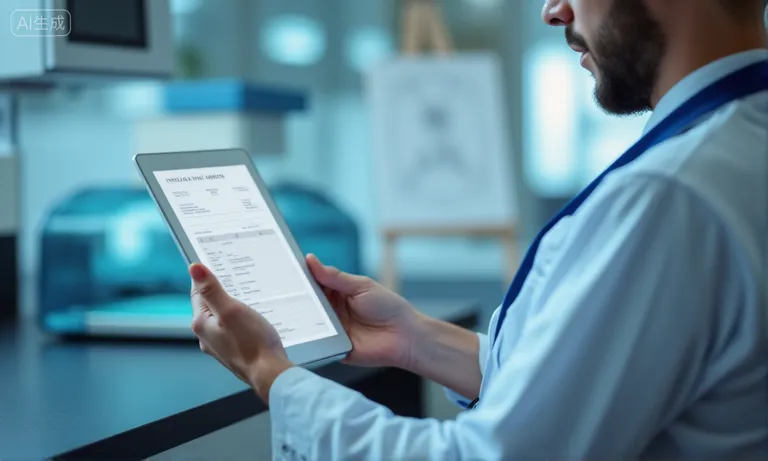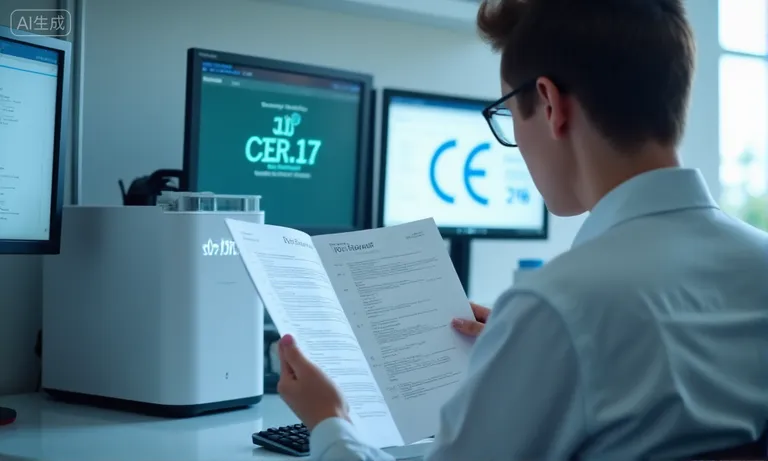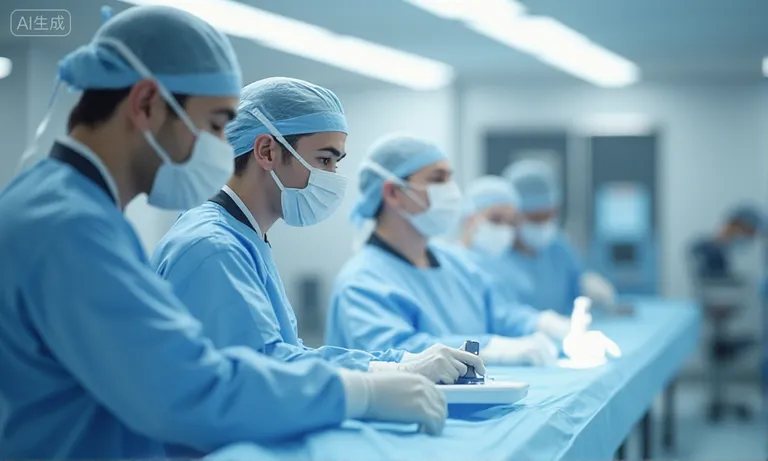Adopting 3D printing in a dental lab offers clear advantages, but the transition is rarely simple.
Labs exploring this path quickly discover that the investment goes beyond purchasing a machine. Costs, staff expertise, material limitations, and compliance requirements all play a decisive role in determining whether adoption is sustainable. Understanding these risks early helps labs set realistic expectations and avoid costly mistakes.
The main challenges include:
- High upfront and hidden costs – covering equipment, software, maintenance, and consumables.
- Material limitations and performance concerns – durability, biocompatibility, and resin expenses.
- Specialized training needs – requiring new skills, updated SOPs, and a steep learning curve.
- Workflow disruption – from post-processing steps to file compatibility and integration with existing systems.
- Compliance and certification uncertainties – regulatory standards, material approvals, and potential IP risks.
Labs that acknowledge these risks from the start are better positioned to adopt 3D printing strategically.
By planning investments carefully, piloting new processes, and partnering with experienced digital labs or suppliers, they can reduce disruption and turn challenges into manageable steps. In the long run, this preparation not only minimizes risk but also creates a stronger foundation for sustainable digital growth.
What Are the Cost and Material Barriers in 3D Printing Adoption?
High initial investments and material constraints remain two of the most decisive barriers for dental labs when considering 3D printing adoption. While the technology promises faster turnaround and digital workflow integration, labs must weigh real costs and biocompatibility challenges before expecting reliable ROI.

How Do Upfront Equipment and Software Investments Impact ROI?
Most labs discover that a professional-grade 3D printer is only the beginning. Industrial printers, compatible curing units, and design software licenses often exceed $20,000–$50,000. ROI is highly dependent on utilization rates; underused equipment quickly turns into sunk cost. Some mid-sized clinics in Europe report that without a stable weekly case load, breakeven periods extend beyond three years.
What Hidden Costs Should Labs Expect (maintenance, upgrades, consumables)?
Beyond acquisition, ongoing costs include annual software updates, calibration, and replacement of light sources or resin tanks. For instance, a mid-size dental lab in Toronto found that replacing resin vats every six months added nearly $4,000 annually. Such hidden costs are rarely highlighted in equipment brochures but directly impact profitability.
What Material Limitations Affect Durability and Biocompatibility?
Not all resins are equal. Some deliver good accuracy but lack long-term stability in oral conditions. Biocompatibility certifications also vary by region: a Class IIa resin in Europe may not yet be cleared by the FDA in the U.S. Labs working with implant-supported restorations often find that strength limitations restrict 3D printing to temporaries or surgical guides, not definitive prosthetics.
How Do Resin and Consumable Costs Influence Long-Term Profitability?
Resin pricing—ranging from $200 to $500 per liter—significantly affects margins. A busy lab processing 100 aligner models a week can spend thousands monthly on consumables alone. Additionally, expired or partially used resins often need disposal, further eroding margins. Global dental labs frequently evaluate bulk purchasing or strategic supplier agreements to stabilize costs.
For dental labs, managing cost and material barriers is less about technology hype and more about operational math. From hidden consumables to resin limitations, financial discipline is what differentiates successful adopters from those who struggle. In practice, overseas partners such as Raytops Dental Lab have seen clients underestimate resin consumption during pilot runs, highlighting why early financial modeling is essential before scaling.
How Do Training and Staffing Requirements Shape Adoption Success?
Adoption success in dental labs depends less on the machines themselves and more on the people operating them. Without trained staff who can manage CAD/CAM design, printer settings, and post-processing workflows, even the best equipment produces inconsistent results and costly rework.

What Skills Are Needed to Operate CAD/CAM and 3D Printing Systems?
Successful adoption requires a blend of technical and dental knowledge:
- CAD software proficiency (e.g., 3Shape, Exocad).
- Understanding printer calibration, resin handling, and curing steps.
- Familiarity with digital case data, including STL file integrity checks.
- Basic troubleshooting of mechanical and software errors.
Labs that fail to bridge dental context with digital skills often face higher error rates.
How Steep Is the Learning Curve for Technicians and Designers?
For experienced model makers, shifting from wax work to CAD design can feel like learning a new language. Most labs report that staff need at least 3–6 months to become comfortable with digital workflows. A lab in Melbourne shared that their first digital hires spent weeks correcting STL import errors before producing reliable crowns. This steep curve can slow adoption timelines and discourage early momentum if not properly planned.
What SOP and Quality Training Are Required to Reduce Errors and Rework?
Clear operating procedures ensure that the same job is printed the same way every time. Labs typically implement training in three stages:
- Initial onboarding – covering CAD/CAM basics, printer safety, and resin handling.
- Process standardization – ensuring files are pre-checked, calibration is logged, and curing times are consistent.
- Quality assurance – training staff to spot fit issues early, reducing downstream remakes.
Labs that neglect SOPs often see higher remake ratios. In contrast, those investing in structured training cut their rework rates by up to 30%, as confirmed by several mid-sized labs in North America.
When adoption is treated as a staffing challenge—not just a technology upgrade—labs build resilience against costly mistakes. Overseas partners such as Raytops Dental Lab frequently collaborate by providing file-prep guidance or shared training resources, helping clients shorten the learning curve and stabilize quality faster.
What Compliance and Certification Issues Create Adoption Risks?
Regulatory compliance is one of the most complex barriers to 3D printing adoption in dental labs. Unlike traditional workflows, digital printing introduces stricter certification demands on both devices and materials, and uncertainty in evolving regulations can delay product acceptance or even create legal exposure.

Which Standards Apply (ISO 13485, FDA, CE) to 3D Printing in Dentistry?
Dental devices manufactured with 3D printing fall under multiple frameworks:
- ISO 13485 – quality management system required for medical device production.
- FDA 510(k) – clearance needed in the U.S. for biocompatible resins and final-use dental appliances.
- CE marking – certification to distribute within the European Union.
- MDR (Medical Device Regulation) – further regulates Class IIa and IIb dental devices in Europe.
Labs must track which certification applies to their market and product category, as compliance determines whether restorations can be legally delivered.
Why Is Regulatory Uncertainty a Concern for Printed Dental Devices?
Regulations often lag behind innovation. For instance, while temporary crowns may be approved under specific resins, permanent restorations printed with the same equipment could fall into a regulatory grey zone. This leaves labs exposed: an implant bar accepted in one jurisdiction may be rejected in another. Regulatory gaps slow adoption because labs fear investing in equipment that might later face restrictions.
How Do Material Certifications and Traceability Requirements Impact Case Acceptance?
Traceability requirements mean every batch of resin and every print job must be recorded for compliance audits. Below is a simplified view of material considerations:
| Requirement | Impact on Labs |
|---|---|
| Biocompatibility certification | Determines if appliances can be placed intraorally |
| Lot number traceability | Labs must log resin batch for every patient case |
| Regional certification differences | A resin cleared in the EU may not yet be FDA-approved |
Failure to manage these details can result in rejected cases, reprints, and reputational damage with clinics.
How Can Labs Address Potential IP and Data Ownership Risks?
Beyond materials, labs must consider digital data ownership. STL files and design libraries may be subject to intellectual property disputes. Some labs have faced questions over whether design rights belong to the clinic, the CAD technician, or the software provider. Establishing clear contracts and secure data management protocols reduces the risk of IP disputes and strengthens client trust.
Compliance is not simply paperwork—it shapes the commercial viability of 3D printing. Labs that plan for evolving certifications and manage traceability from the outset reduce disruption. Many overseas dental labs, including Raytops Dental Lab, share documentation templates and audit experiences with clients, helping them navigate certification hurdles more confidently.
How Does 3D Printing Disrupt Existing Lab Workflows?
3D printing reshapes daily operations in dental labs by introducing new file standards, additional processing steps, and integration challenges with traditional methods. While it expands capabilities, the transition often adds complexity that can slow production and increase rework if not carefully managed
What Compatibility Challenges Exist with STL Files and CAD/CAM Systems?
Compatibility is a frequent hurdle. STL files exported from one CAD system may not perfectly align with another. Common issues include:
- Loss of margin definition when moving between software.
- File corruption during transfers via cloud storage.
- Scaling discrepancies when importing into printer software.
Labs must build redundancy checks into their workflow to catch these errors early.
How Do Post-Processing Steps Add Time and Complexity?
Unlike milling, printed parts require careful post-processing:
- Support removal – manual trimming of excess resin structures.
- Cleaning – washing parts in isopropyl alcohol to remove uncured resin.
- Curing – exposing models to controlled light cycles for biocompatibility.
- Finishing – polishing or smoothing surfaces before case delivery.
Each step adds minutes or hours to production, meaning “print time” is only a fraction of the total workflow.
How Can Labs Balance Traditional and Digital Workflows During Transition?
Most labs cannot switch fully to digital overnight. Hybrid workflows—using traditional impressions for some cases and digital design for others—are common during the transition. This requires careful scheduling to avoid bottlenecks, as staff must split time between casting and CAD work. A North American group lab found smoother adoption by assigning dedicated “digital champions” to oversee 3D print cases while others continued conventional methods.
What Common Workflow Errors Increase Risk of Rework?
Labs often encounter preventable mistakes such as:
- Skipping STL verification before printing.
- Inconsistent curing times across technicians.
- Forgetting to log resin batch numbers.
- Mixing traditional and digital case records, leading to lost files.
Each error increases the likelihood of remakes, undermining the perceived efficiency of 3D printing.
Workflow disruption is not inherently negative—it signals change. Labs that recognize new file compatibility checks, post-processing protocols, and hybrid scheduling as part of the learning curve adapt faster. From our perspective as a global dental lab, Raytops Dental Lab has seen clients reduce workflow errors by creating joint checklists during the transition stage, turning disruption into a structured upgrade rather than chaos.
How Can Dental Labs Mitigate These Risks Before Fully Adopting 3D Printing?
Dental labs can minimize disruption by treating 3D printing adoption as a phased transformation rather than a single purchase. Financial due diligence, pilot projects, and external partnerships allow labs to control risk while building confidence in new workflows.

What Due Diligence Steps Reduce Financial and Compliance Risks?
Labs can lower risk exposure by following structured pre-adoption checks:
- Vendor vetting – verify that equipment and resins carry valid certifications (FDA, CE, ISO).
- Financial modeling – calculate ROI scenarios based on expected case volume and resin usage.
- Hidden cost analysis – include consumables, training, maintenance, and software renewals in cost forecasts.
- Compliance review – check local regulations for biocompatibility and device approvals.
Labs that invest in this due diligence avoid costly surprises after rollout.
How Do Pilot Projects or Phased Adoption Minimize Disruption?
Instead of fully converting workflows, labs can run controlled pilot projects. For example, a U.K. lab began by printing only surgical guides for six months, allowing technicians to refine file preparation and curing protocols before adding splints and provisional crowns. Phased adoption helps staff gain confidence, reveals bottlenecks early, and prevents overinvestment in underutilized systems.
What External Partnerships or Support Models Help Labs Manage Complexity?
Partnerships extend internal capabilities without overwhelming staff:
- Collaboration with overseas dental labs for overflow cases.
- Training support from equipment vendors or software providers.
- Access to compliance consultants for certification audits.
- Supplier contracts that stabilize resin pricing.
By blending internal adoption with external support, labs build resilience while scaling up capacity.
Mitigating adoption risks requires more than choosing the right printer—it’s about building a structured framework that balances cost, training, and compliance. Many labs choose to work with global dental partners such as Raytops Dental Lab, leveraging shared training resources and pilot collaboration models to accelerate adoption while keeping risks under control.
Conclusion
Adopting 3D printing in dental labs brings both opportunity and risk. From hidden costs to compliance hurdles, success depends on structured planning, phased implementation, and access to the right expertise. Labs that combine internal training with external support avoid the common pitfalls of rushed adoption and unstable workflows. Working with an overseas dental lab partner such as Raytops Dental Lab can provide added stability through shared experience, quality frameworks, and scalable production support. For decision makers, the lesson is clear: 3D printing is not only a technology investment but a strategic collaboration that shapes long-term competitiveness.


